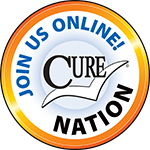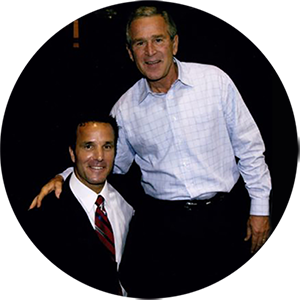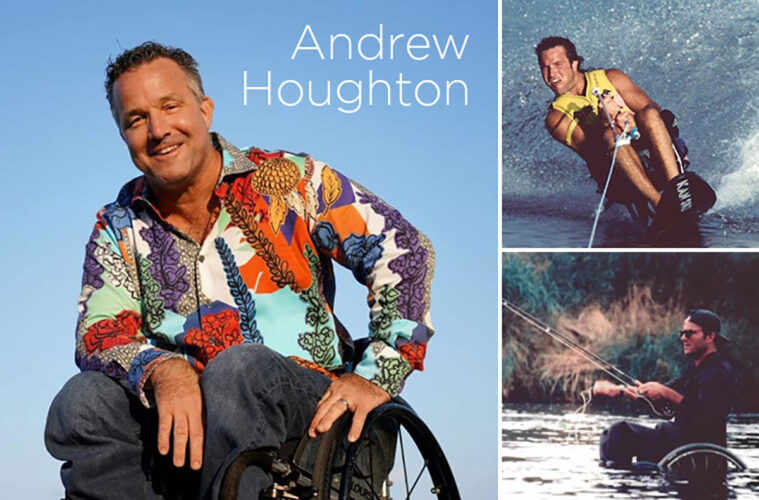 Andrew Houghton chose to turn crisis into coaching opportunities, supporting adaptive sports, and advocating for individuals with a disability – on a global scale. Having survived a traumatic event, his natural inclination was to use his hard-earned wisdom to help others suffering similar fates. It’s not that he has a degree in psychology or social work, it’s just that he has ‘been there’ – and, he cares.
Andrew Houghton chose to turn crisis into coaching opportunities, supporting adaptive sports, and advocating for individuals with a disability – on a global scale. Having survived a traumatic event, his natural inclination was to use his hard-earned wisdom to help others suffering similar fates. It’s not that he has a degree in psychology or social work, it’s just that he has ‘been there’ – and, he cares.
Looking at the tanned, friendly face of Andrew Houghton, you’d never suspect the journey he’s been on. Unlike the usual Zoom call, Houghton’s picture is sharp and clear. He’s coming to me from his office equipped with individual cameras and microphones. He looks more like the media founder that he is, (No Barriers Media, 2012), filmmaker (Roll Models, 1999) and extreme sports personality (Planet X, 1996) than a man who has faced adversity. The wheelchair is the only give-away.
Andrew Houghton didn’t magically feel qualified to counsel others when he was paralyzed in a car crash at age 20. Like most people, he struggled and drifted in an attempt to discover what life in a wheelchair would be like. He just had a gift that served him well.
“I would really be nowhere if it wasn’t for people who helped me along the way.” Houghton begins, after a cheerful, “Most people call me Andy”.
“I struggled. I lived out of my car for a while, but people gave me a hand and helped me discover adaptive sports. It made all the difference. That’s why I want to tell others about it. I feel like I owe it to other people.”
Andy’s journey began with sports
“The first sport I tried was snow skiing. I didn’t know anything about anything until I read this article about what they were doing up in Big Bear, California – where they had all kinds of people skiing. What the heck, I was young, I tried it and didn’t want to stop.”
A wolfish gleam pops into Andy’s eyes as he says, “If there was a massive storm, they always knew I would show up.”
But you had to make a living, right?
Houghton smiles wryly, “I got a little money from the accident, but like so many other kids, I blew through it right away. Didn’t think. Partied. So, all of a sudden, I needed a job to survive. I began working at selling medical supplies, but I became known for a lot more than that.”
As Andy went into hospitals, talking about products and doing in-services for the medical professionals, he became well known as ‘the guy who would come in and help others’.
“I had this thing where I could talk to the patients about anything.” he says candidly. “We talked a lot about sexuality, getting back into the dating thing. I’d do in-services for doctors regarding medical equipment, and they realized I was genuine. I sincerely wanted to help shorten the learning curve.”
In addition to selling medical supplies, Andy had other goals. He envisioned an adaptive Sports Camp for families who could learn about new things while just having good, clean fun. That was the start of the now-famous annual Land Meets Sea Sports Camp in Long Beach, California.
“At first, the event was just a way to bring people together.” Andy remembers. “It expanded so people could be exposed to new things, adaptive sports, and new products.” Modestly, Houghton continues, “Eventually Casa Colina picked up the program and I believe it continues today”, neglecting to mention that he had become the Director of Wheelchair Sports at Casa Colina Hospital and Rehabilitation Center.
Besides kayaking, water skiing, hand cycling, archery, and other sports, what did people learn at Land Meets Sea? The answer: From learning about new sports equipment to intermittent catheter options, the goal was for participants to learn ways to increase independence.
“Catheters were key! I was in a rehab hospital in 1986 for over 3 months following my accident. I left there with red rubber catheters that you had to wash every time. That was all that I knew. As I learned more, I saw what was better. Back in the 1990s I learned about single use, sterile catheters.
I was the guy who was out there, fishing. I could have fish guts on my hands, so how was I supposed to rinse off a catheter? But with a sterile catheter, you just pull this thing out of the package and you do it! My hands never touch the part of the product that goes inside my body.”
When Cure Medical was founded in 2007, Andy was among the first to use the Cure Catheter® Closed System, pre-lubricated ‘cath-in-a-bag’. He continues to use it to this day.
Andrew shakes his head ruefully.

Cure Catheter® Closed System
“When I was using and reusing the other catheters, I was getting a lot more infections. For years, I had to be on a maintenance antibiotic. After I started using a sterile (‘No Touch’) technique with the Cure Catheter Closed System, my infection rate went way down.
Sterile cathing with a closed system catheter matched my new lifestyle and was healthier. You can’t be kayak fishing in Louisiana and touch or reuse a catheter!”
Making a difference nationally and globally
Were you happy as the helpful, beach bum buddy, I ask? Andrew, looking up from his state-of-the-art Zoom studio, smiles.
“Happy? No. If you go back to the 90s, you’d see me fat and unhealthy… eating and drinking a lot … I looked scary. I had no college degree, but a degree of depression. After several years, I stopped feeling self-pity and determined to live life. I think it was pure grit and good heartedness that people saw in me.”
In 1993, Andy was featured in an Orange County Register newspaper article. It was a local-boy-makes-good article about his rise above the wheelchair and how he helps others. It was just a good piece in a local paper, but some influential people read it. The result:
“I was invited to go to Bosnia in 1996. We had a group of Turkish military who took us around and we established their wheelchair basketball program.” Andy’s voice rises and his eyes gleam.
“It culminated with a live broadcast of the game. Our team was beat up by the Bosnian team on live TV! They won! It was great.”
It is typical of Andy Houghton that he celebrates being beaten by the other guys – the ones he helped to coach and train.
As Andy’s reputation grew, the invitations kept coming. In 1996, Andy was featured on the cover and in an article in New Mobility magazine featuring ‘Disability Lifestyle, Culture, and Resources’. In 1999, Andy was invited to Kosovo for a special event. “At the same time” Andy said, “I wanted to learn more about the employment part of disability.”
Andrew learned. He was invited to be part of U.S. AbilityOne Commission – an independent Federal Agency employing 40,000 + people with significant disabilities.

Andrew with President George W. Bush
“There I was, this Southern California Skier Dude, along with about 14 highly educated senior government officials, on the Board of the AbilityOne Commission.” Andy retells, relaxing easily into the posture of a California teen. “I was the first person in a wheelchair on the Committee and the first private citizen to be elected to serve as Committee Chairperson. I did that through 2011. I got to do some cool stuff! I went to the White House Christmas parties and was honored to receive awards, but when I look back, I see how naïve and inexperienced I was about being a leader.”
A pause, then considering:
“My goals were to listen and learn as much as I could. Then, once I felt comfortable enough, I participated. However, I think I could have been more understanding of the things that were possible and could have a little more patience.”
The wheels are turning now, and the Director of Disability Inclusion re-appears as Andy straightens up.
“When I finished the AbilityOne Program in 2011, I needed to reinvent myself and apply the experience to something else. I had a lot of video experience, but I kind of flailed for some time.
“Again, thanks to some of my colleagues, I got involved in a nonprofit corporation to develop Universal Design (UD) standards. It’s called Global Universal Design Commission, Inc. (GUDC) and has grown to become the leading certifier of buildings, commercial, and residential developments, and products that meet Universal Design standards.”
Houghton described his present work.
“Every single building project has to meet certain standards for Universal Design whether it is in India or Indiana. That was the beginning of 25 countries, now we’ve done hundreds and hundreds of assessments. We may be only working in one or two sites, but our work translates to our customers’ entire global footprint.”
From connecting people with information to employment equality to an accessible world, Andy has made a significant, positive impact in the lives of countless individuals living with a disability.
When did you see all this coming? From the ski slopes? Andy blinks at me, considering. Then he grins, once again looking like ‘The Skier Dude’.
“I am not too sure how to respond to that. Maybe the answer is related to a conversation I had with a friend recently … I had forgotten about this, but she was adamant that, years ago, I told her that I was going to change the world. Today, upon reflection, it would be nice if I changed the lives of a few and paid it forward for many.”
From where I sit, I say he did.
You can learn more about Andy Houghton’s work at https://disabilityinclusion.com/.
You may also enjoy:

